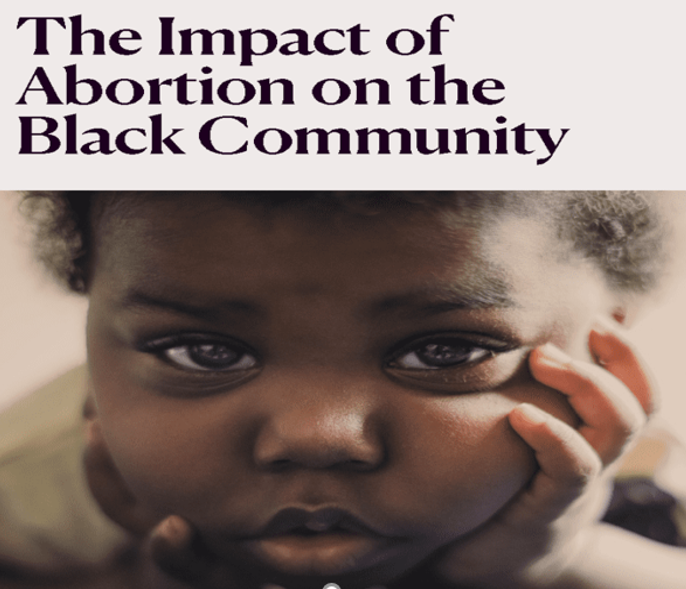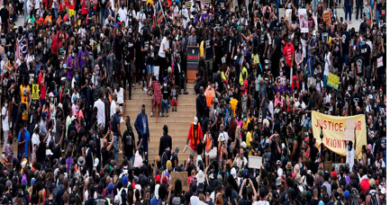Genocide: Black Abortions in America poses the greatest threat to Black and Hispanic communities

Abortion kills more black people than all other causes combined, including murder, diabetes, cancer, heart disease, and AIDS. In 2019, 38.4% of abortions in the United States were carried out by black women. More Black children have been aborted since Roe v. Wade than have resided in large cities [1, 2].
The abortion business, which makes money off of lies and carnage, is exposed by Radiance Foundation. Through realistic and thought-provoking movies and marketing materials, they aim to inform the public about abortion’s effects on the black community. The Right to Life of Michigan Educational Fund works to inform people about the disproportionately high frequency of minority abortions in Michigan and the rest of the country [3-5].
Although the ruling is only in draft form, it has shocked the nation. If Roe v. Wade were overturned, states would have the power to decide whether abortion is lawful. The majority of them, mostly in the South and the Midwest, are expected to rapidly outlaw abortion. Although 81 percent of women in Mississippi have abortions, people of color only make up 44% of the population [6, 7].
Minorities account for 59% of the population in Texas and 74% of abortion patients. They are, respectively, 35% and 69% in Louisiana and Alabama. Cathy Torres, an organizing manager with Frontera Fund in Texas, claims that prohibitions on abortion are racist [8-10].
As Roberts puts it, “We’re talking about people who are already on the margins.” In 2014, when Amanda Furdge learned she was expecting a second child, she was a pregnant single college student who was also caring for one child. She had already had two abortions in Chicago, so finding a clinic in Mississippi to do the procedure was not a problem [11].
In comparison to 49 years ago, when Roe v. Wade was decided, the attorney general of Mississippi claims that it is “easier for working moms to manage professional achievement with family life.” Many minority women in Mississippi and abroad, according to advocates, do not experience that [12, 13].
In order to avoid pregnancy and STDs, Mississippi law mandates that sex education in public schools promote abstinence. The anti-abortion movement has repeatedly framed the abortion argument in terms of race. States with severe abortion laws had lower insurance coverage rates for Black and Hispanic women. [14, 15].
A proponent of abortion claims that the number of Black kids aborted since Roe v. Wade would be comparable to the population of numerous major cities. State Representative Zakiya Summers claims that indigent women in Mississippi are frequently forced to choose between having an abortion and keeping their child [16, 17].
Greater numbers of Black infants have indeed been aborted since Roe v. Wade than have resided in a number of significant cities. The anti-abortion movement has a history of framing the abortion argument in terms of race. From a historical perspective, Maafa 21 looks at the approximately 150-year-old plan to exterminate the black race. Black and Hispanic women are less likely to have health insurance in states with tight limits on abortion.
[1] D. E. Kalist, “Abortion and female labor force participation: Evidence prior to Roe v. Wade,” Journal of Labor Research, vol. 25, no. 3, pp. 503-514, 2004.
[2] T. Joyce, “Did legalized abortion lower crime?,” Journal of Human Resources, vol. 39, no. 1, pp. 1-28, 2004.
[3] J. H. Kunstler, The city in mind: Notes on the urban condition. Simon and Schuster, 2003.
[4] J. Simons, Rosamond Lehmann. Northcote House Pub Limited, 2011.
[5] D. Bahr, No Christian Man Is an Island. Xulon Press, 2010.
[6] J. Balkin, What Roe v. Wade should have said: the nation’s top legal experts rewrite America’s most controversial decision. NYU Press, 2007.
[7] J. H. Wilkinson III, “Of guns, abortions, and the unraveling rule of law,” Va. L. Rev., vol. 95, p. 253, 2009.
[8] K. Pazol, A. A. Creanga, K. D. Burley, B. Hayes, and D. J. Jamieson, “Abortion surveillance—United States, 2010,” Morbidity and Mortality Weekly Report: Surveillance Summaries, vol. 62, no. 8, pp. 1-44, 2013.
[9] S. K. Henshaw, “Teenage abortion and pregnancy statistics by state, 1992,” Family Planning Perspectives, pp. 115-122, 1997.
[10] K. Pazol, A. A. Creanga, K. D. Burley, and D. J. Jamieson, “Abortion surveillance—United States, 2011,” Morbidity and Mortality Weekly Report: Surveillance Summaries, vol. 63, no. 11, pp. 1-41, 2014.
[11] W. J. Chambliss and D. S. Eglitis, Discover sociology. Sage Publications, 2018.
[12] K. H. Jamieson, Beyond the double bind: Women and leadership. Oxford University Press on Demand, 1995.
[13] R. M. Salokar, The solicitor general: The politics of law. Temple University Press, 1994.
[14] J. Jerman, R. K. Jones, and T. Onda, “Characteristics of US abortion patients in 2014 and changes since 2008,” 2016.
[15] C. Mason, Killing for life: The apocalyptic narrative of pro-life politics. Cornell University Press, 2002.
[16] A. Davis, “Racism, birth control and reproductive rights,” Feminist postcolonial theory: A reader, pp. 353-367, 2003.
[17] R. Solinger, Abortion wars: A half century of struggle, 1950–2000. Univ of California Press, 1998.

